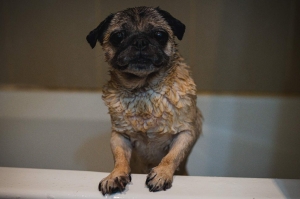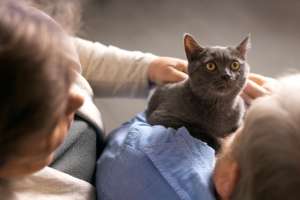Auricular pathologies are common in companion animals and make up a large part of veterinary visits. The accuracy of ear canal exams is key to effective treatment. Issues like stubborn otitis externa and complications from poor visibility can affect this. The tools used for otoscopic evaluation have changed a lot. However, many practitioners still use old equipment. This can hurt the accuracy of their diagnoses.
Epidemiological Significance of Otologic Disorders
Auricular disease is a big issue in veterinary care. It impacts about 15-20% of dogs and 6-7% of cats each year. The economic implications are significant. The veterinary otoscope market was worth $150 million in 2024. It is expected to grow to $250 million by 2033. This shows a compound annual growth rate of 6.5%.
These figures show that many practitioners now realize poor diagnostic abilities lead to worse patient outcomes. About 67% of American homes have pets. Plus, veterinary jobs are expected to grow by 20% by 2031. This means the need for advanced diagnostic tools is rising too.
The Physiological Rationale for Comprehensive Otoscopic Examination
Otoscopic visualization serves as the foundational diagnostic modality for evaluating auricular pathology. The exam checks the outer ear canal, evaluates the eardrum's condition, and identifies any signs of infection, inflammation, or tumors.
Conventional handheld otoscopes work for simple exams, but they have big limits in complex diagnoses. Veterinary patients show a lot of anatomical variety. Birds have unique ear structures, while large ungulates have long ear canals. This means we need flexible tools that can handle different shapes and sizes.
Critical Parameters in Otoscopic Equipment Selection
Professional veterinary otoscope systems have key features that set them apart from lesser options:
Illumination Architecture: Modern LED lighting systems offer steady, bright light throughout the visible spectrum. This helps detect small color changes in mucosal tissue. These changes are key signs of blood flow issues, inflammation, or how well treatment is working.
Morphological Adaptability: Anatomical variability necessitates equipment versatility. Insertion tubes need to fit the fragile ear structures of small exotic species. They also must be strong enough for examining larger animals. Diameter selection, working length, and optical characteristics all contribute to diagnostic comprehensiveness.
Optical Resolution: High-quality magnification systems use precise lenses to show tiny pathological changes. Inflammation in Prussak's space, early cholesteatoma, and small tympanic membrane perforations can be tricky to detect. Good optical performance is crucial for spotting them.
Structural Integrity: Veterinary diagnostic equipment endures rigorous sterilization protocols and frequent utilization. Instruments need to stay clear and functional. This is important even after many uses of chemical disinfectants and heat sterilization.
Video Otoscopy: Paradigmatic Advancement in Auricular Diagnostics
Video otoscopic systems represent a transformative technological innovation in veterinary ear examination. These systems use small CCD or CMOS sensors to show real-time images on external displays. This provides several key benefits:
Enhanced Collaborative Examination and Client Education
The technology allows multiple observers to look at pathological findings together. This boosts educational chances for veterinary students. It also helps clients understand disease processes better by providing direct visualization. Research shows that clients follow therapy better when they see the pathology instead of just hearing about it.
Digital Documentation and Longitudinal Assessment
Digital archiving lets us compare exams over time. This gives clear proof of how well treatments work or how a disease is changing. This is especially helpful for managing chronic ear conditions. Improvements happen slowly over long treatment periods.
Procedural Precision and Efficiency
Video otoscopy substantially enhances procedural interventions. Foreign body extraction, tissue biopsy, and myringotomy procedures benefit from clear, magnified views. This helps shorten procedure times and lower patient risks. Freeing both hands for instrument use while still watching closely marks a big step up from old monocular methods.
Diagnostic Impediments and Clinical Considerations
Numerous factors may compromise initial otoscopic examination. Too much earwax, pus, or pain can make it hard to see deeper structures. In these cases, it may help to use preliminary treatments. This could be anti-inflammatory medication, pain relievers, or ceruminolytic agents. These steps can be taken before a full examination.
Species-specific anatomical knowledge is paramount. The equine ear canal has unique features that set it apart from dog and cat anatomy. Not recognizing these variations can lead to missed details or misreading normal anatomy as disease.
Emerging Technological Innovations
Several technological trends are reshaping veterinary otoscopic practice:
Telemedicine Integration and Remote Consultation
Portable otoscopic systems with wireless connectivity allow vets to consult specialists remotely. This expands access to expert care, especially in remote areas. This ability is crucial for follow-up evaluations and therapy monitoring. It allows for assessments without needing clients to return repeatedly.
Multispectral Imaging and Advanced Visualization
Advanced systems use narrow-band imaging or fluorescence enhancement. These technologies improve tissue contrast and can show lesions that regular white light can't see. These modalities show promise in early neoplasia detection and differentiation of inflammatory versus infectious etiologies.
Flexible Endoscopic Platforms and Ergonomic Design
Modern insertion tubes employing shape-memory alloys or articulated designs navigate tortuous ear canal geometries while minimizing tissue trauma. This lessens patient discomfort and helps fully view the tympanic membrane. This is important when canal stenosis or unusual curvature makes examination difficult.
Integrated Working Channels for Therapeutic Intervention
Otoscopes with accessory channels allow doctors to see and act at the same time. They can remove foreign bodies, irrigate, or give medication during one visit. This makes the procedure more efficient.
Equipment Selection Considerations for Clinical Practice
Procurement decisions should be informed by several pragmatic considerations:
Patient Demographics and Practice Scope
Patient demographics substantially influence equipment requirements. Mixed animal practices for pets and farm animals need flexible systems. They require insertion tubes that fit different body sizes. Small animal exclusive practices may prioritize miniaturization and portability over extended working lengths.
Utilization Frequency and Return on Investment
Utilization frequency justifies capital investment. Practices that see otologic cases every day gain more from advanced video otoscopy systems. In contrast, those that deal with ear disease only occasionally do not benefit as much.
Financial Analysis and Total Cost of Ownership
Fiscal constraints extend beyond acquisition costs. Maintenance costs, replacing consumables, equipment lifespan, and warranty terms all raise the total cost of ownership. Premium systems may cost more upfront, but they often pay off. Their durability and diagnostic features lead to better results and greater efficiency.
Training Requirements and Staff Competency
Personnel training requirements vary considerably. Staff must demonstrate competency in equipment operation and interpretation of visualized findings. Many people resist adopting new technology because they think it's too complex. However, modern systems now have user-friendly interfaces that make learning easier.
The Diagnostic-Therapeutic Nexus
Diagnostic precision has a direct impact on therapeutic outcomes. Understanding how severe the disease is, where it affects, and what causes it helps us pick the right treatments. This way, we avoid guessing. This precision reduces treatment duration, minimizes unnecessary pharmaceutical utilization, and enhances patient welfare.
Definitive confirmation of tympanic membrane rupture, for instance, fundamentally alters therapeutic planning. Middle ear issues require careful choice of safe medications. They might also mean you need systemic antibiotics. Without good visualization, practitioners might use treatments that don't work or could harm patients.
Future Trajectories in Veterinary Otoscopy
The veterinary otoscopic market is changing. It's driven by new technology and changes in how practices operate. Wireless architectures eliminate cumbersome cables that restrict examiner mobility. AI integration can help with diagnosis. It highlights important areas and suggests different diagnoses. This is based on pattern recognition algorithms trained on large image databases.
Ongoing miniaturization efforts create smaller insertion tubes. These tubes improve accessibility while keeping optical performance high. This advancement particularly benefits exotic animal medicine, where patient size imposes unique constraints.
Increasing emphasis on preventive healthcare drives demand for equipment facilitating thorough routine examinations. Detecting ear problems early helps pets before owners notice symptoms. This improves treatment success and lowers overall healthcare costs.
Concluding Observations
Veterinary auricular diagnostics have changed a lot. Modern otoscopic technology now provides great visualization and accuracy for diagnoses. Practitioners who wisely invest in quality diagnostic tools can provide better patient care. They also build stronger client relationships by improving communication and education.
Choosing equipment is more than just buying; it shows a commitment to quality diagnosis and patient care. Veterinarians should choose handheld platforms or advanced video systems that meet their practice needs. It's important to prioritize tools that ensure reliability and performance for successful diagnostics.
The key idea is simple: treatment can’t be better than the diagnosis that supports it. Veterinary otology excellence starts with clear visualization of problems and accurate interpretation of results. Advanced otoscopic technology helps practitioners improve care standards.






